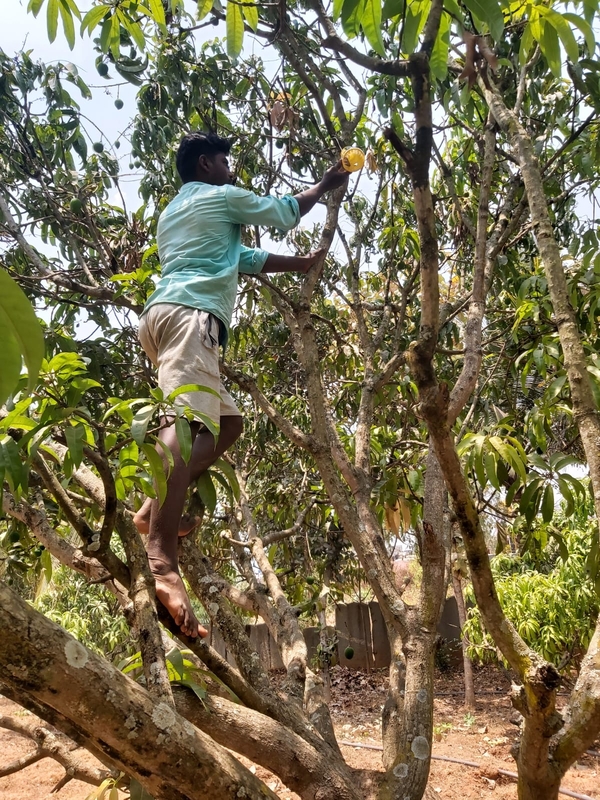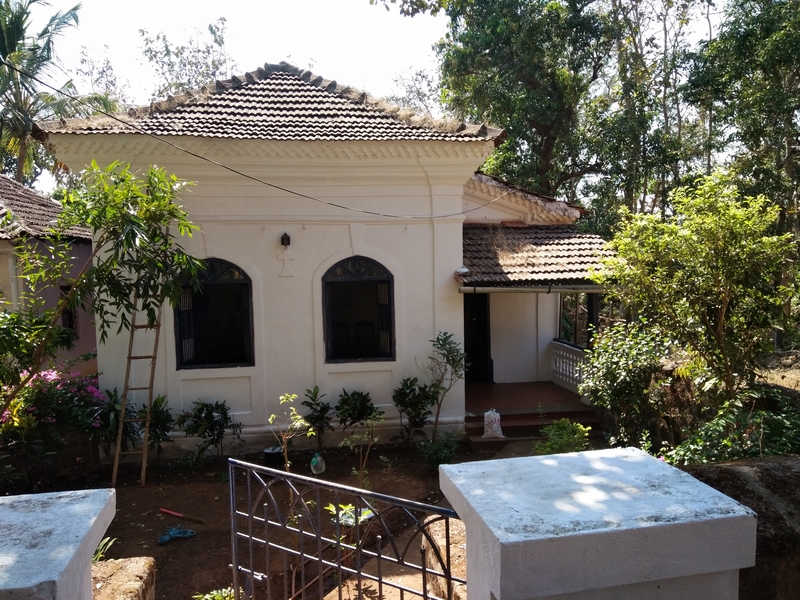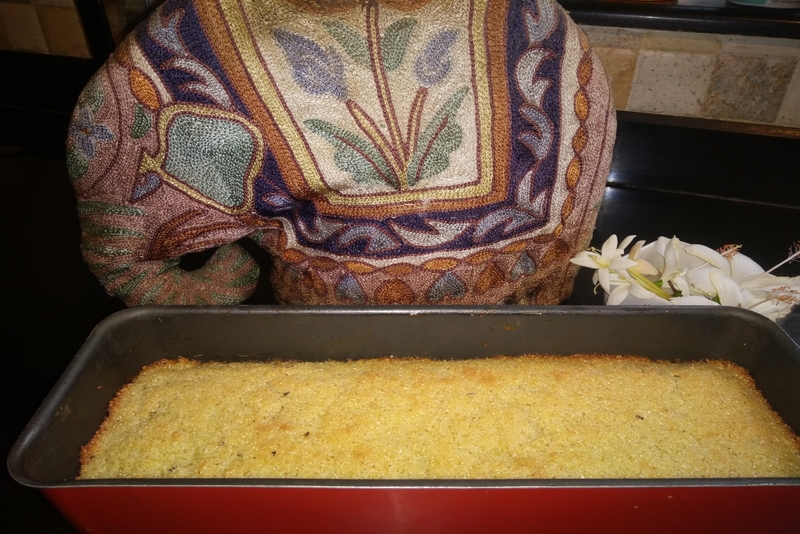Gardening in the West is different

Both my elder sons left the tropical climate of Bangalore India to live in the West. One in the UK and one in the US. Both boys are crazy gardeners and it was a huge learning experience for them to acquire knowledge on how to garden in countries with the deeply cold winters and pretty warm summers.
Since I spend time in both homes and love gardening as well, it was a huge learning curve for us to learn about perennials and annuals. That there are some plants which can be planted and that die back in the winter and then come back year after year -- the perennials. While the annuals die out completely and never return unless replanted from scratch.
Since both boys are exceedingly busy in their jobs, the only time they have for their gardens is probably over the weekend. So, perennials was the way to go in populating their large gardens. Ofcourse in the summer there was no option but to come home from work and water the garden quite late at night.
So the first year the boys indulged their mother buying all that caught my fancy in the little nurseries around. Both of us blissfully unaware of the difference. After I realised that the plants would really only bloom for a very few months, the Indian in me kicked in -- what a terrible waste of money.
So, the next year we put down azaleas and rhododendrons, hydrangeas and Fuschias and my absolute favourite - Camelias, all the ‘hardy’ variety. The only annuals we indulged in were the hanging baskets of Petunias and Begonias and those we built from scratch. Those are redone year after year, but the rest of the garden pretty much takes care of itself, with the annuals like daffodils and tulips being cut back in the winter and blooming back again in the summer.
Each year weeding too is a hellish job and they cannot really handle that with such huge gardens. We have learned to place a special planting fabric down on the beds, cutting out spaces for the flowers and then covering the fabric between the plants with mulch after the flowers have been well fed with compost and Miracle Grow liquid. This is to encourage flower bud production. It is a fertilizer that contains a small percentage of nitrogen, a higher percentage of phosphorous, and a little potassium.
The mulch, the son in Tennessee uses is called Pine straw. He says that’s the most effective cutting growth of weeds between the plants. As kids in Shillong the pine forest alongside our home on the hillside, had a bed of pine needles below the trees which prevented any sort of undergrowth. It’s amazing how the pine needles inhibit growth of anything below them, especially when the beds are loaded with the straw, bought from Home Depot.
The boy in the UK just loads the beds with wood chip mulch which does very much the same, but minus the fabric below a couple of weeds do poke their way through. He does not mind as he loves pottering around his garden.
But when its the lawn it’s a completely different ball game. The first weeds that appear are the hardy Dandelion in the US and in the UK besides the Dandelion they also get small white daisies. We spent hours trying to dig up the Dandelions today only in the back- yard, in Tennessee.
Each of us dug up close to 200 of the weeds with their trademark golden yellow flower. At first Alaina said, “ they are so pretty, why do we need to kill them?” But when she was simply told, her Dad dislikes them as they ruin his lawn, she walked around pointing out the plants to us to dig up.
I see the boys spray weed killer and I yell that they use masks when doing it. They feed the lawn and mow it and get serious workouts mowing their lawns.
What I am so glad about is both boys have begun their own compost pits in their gardens, learned from their grandfather in Bangalore. Besides weeds all the grass clippings from the lawn go in and of course in the Autumn the leaves that fall in drifts on the lawn. Those are piled up in a corner and with the snow they rot over the winter months, making a great compost in which they grow their Okra and tomatoes.
Since I spend time in both homes and love gardening as well, it was a huge learning curve for us to learn about perennials and annuals. That there are some plants which can be planted and that die back in the winter and then come back year after year -- the perennials. While the annuals die out completely and never return unless replanted from scratch.
Since both boys are exceedingly busy in their jobs, the only time they have for their gardens is probably over the weekend. So, perennials was the way to go in populating their large gardens. Ofcourse in the summer there was no option but to come home from work and water the garden quite late at night.
So the first year the boys indulged their mother buying all that caught my fancy in the little nurseries around. Both of us blissfully unaware of the difference. After I realised that the plants would really only bloom for a very few months, the Indian in me kicked in -- what a terrible waste of money.
So, the next year we put down azaleas and rhododendrons, hydrangeas and Fuschias and my absolute favourite - Camelias, all the ‘hardy’ variety. The only annuals we indulged in were the hanging baskets of Petunias and Begonias and those we built from scratch. Those are redone year after year, but the rest of the garden pretty much takes care of itself, with the annuals like daffodils and tulips being cut back in the winter and blooming back again in the summer.
Each year weeding too is a hellish job and they cannot really handle that with such huge gardens. We have learned to place a special planting fabric down on the beds, cutting out spaces for the flowers and then covering the fabric between the plants with mulch after the flowers have been well fed with compost and Miracle Grow liquid. This is to encourage flower bud production. It is a fertilizer that contains a small percentage of nitrogen, a higher percentage of phosphorous, and a little potassium.
The mulch, the son in Tennessee uses is called Pine straw. He says that’s the most effective cutting growth of weeds between the plants. As kids in Shillong the pine forest alongside our home on the hillside, had a bed of pine needles below the trees which prevented any sort of undergrowth. It’s amazing how the pine needles inhibit growth of anything below them, especially when the beds are loaded with the straw, bought from Home Depot.
The boy in the UK just loads the beds with wood chip mulch which does very much the same, but minus the fabric below a couple of weeds do poke their way through. He does not mind as he loves pottering around his garden.
But when its the lawn it’s a completely different ball game. The first weeds that appear are the hardy Dandelion in the US and in the UK besides the Dandelion they also get small white daisies. We spent hours trying to dig up the Dandelions today only in the back- yard, in Tennessee.
Each of us dug up close to 200 of the weeds with their trademark golden yellow flower. At first Alaina said, “ they are so pretty, why do we need to kill them?” But when she was simply told, her Dad dislikes them as they ruin his lawn, she walked around pointing out the plants to us to dig up.
I see the boys spray weed killer and I yell that they use masks when doing it. They feed the lawn and mow it and get serious workouts mowing their lawns.
What I am so glad about is both boys have begun their own compost pits in their gardens, learned from their grandfather in Bangalore. Besides weeds all the grass clippings from the lawn go in and of course in the Autumn the leaves that fall in drifts on the lawn. Those are piled up in a corner and with the snow they rot over the winter months, making a great compost in which they grow their Okra and tomatoes.

Related Articles
Editor's Picks Articles
Top Ten Articles
Previous Features
Site Map
Content copyright © 2023 by Marianne de Nazareth. All rights reserved.
This content was written by Marianne de Nazareth. If you wish to use this content in any manner, you need written permission. Contact Marianne de Nazareth for details.





 -resizeimage.jpg.jpg)

